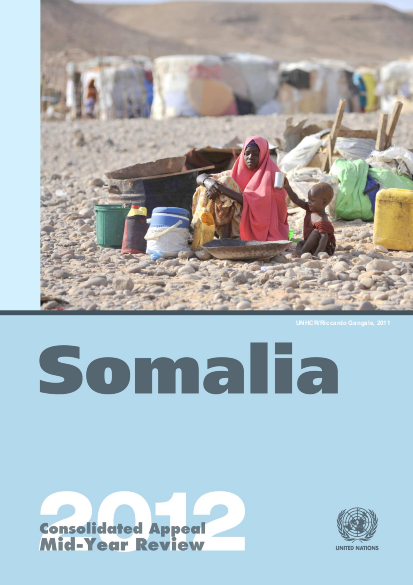
Famine conditions are no longer present in Somalia, largely due to the on-going delivery of aid under extremely difficult conditions and the exceptional harvest at the beginning of the year. The humanitarian situation, however, is still critical. Over 2.51 million people remain in crisis, unable to fully meet their basic needs without assistance. Among the 1.5 million Somalis who are no longer in crisis, almost 1.29 million are in a stressed food security situation (?Phase Two? of the Integrated Food Security Phase Classification). They will risk sliding back into crisis without sustained assistance. Mortality and malnutrition rates in Somalia have improved dramatically, but remain among the highest in the world. An estimated 323,000 children are acutely malnourished, representing 22% of all under-five children. The mid-year review undertaken by the Humanitarian Country Team for Somalia in May and June highlights that we must build on the gains made since famine was declared in July 2011 or they could be reversed. To prevent future shocks from developing into humanitarian catastrophes, we are asking donors to support our strategy to provide life-saving assistance to millions of Somalis and build sustainable livelihoods.
In response to the changes in the humanitarian context, the humanitarian community dropped the reference to ?famine? from its strategic priorities during the mid-year revision. Nonetheless, the strategic priorities largely remain unchanged. This reflects the enormous needs on the ground, as well the recognition that we must redouble efforts to build up Somalis‘ ability to cope with future shocks in the aftermath of the famine. The strategy focuses on providing life-saving assistance to people in crisis and emergency (Integrated Phase Classification Phases Three and Four), with special emphasis on households with malnourished children; resilience-building through livelihood support, especially for the ?stressed? populations; provision of integrated basic services to vulnerable populations; and strengthening the protective environment for civilian populations. The approach to assistance will be multi-sectoral and efforts will be made to scale up humanitarian and resilience-building interventions in areas that become more accessible. Underlining the importance of producing a realistic and implementable plan for the rest of the year, the Humanitarian Country Team based its revised appeal on the needs of the Somali people and humanitarian organizations‘ capacity to deliver, recognizing the prevailing access challenges in parts of Somalia. The initial consolidated appeal 2012 requested US$1.52 billion.1 The revised appeal requests $1.16 billion to address the needs of 3.8 million people, comprising the 2.51 million people in crisis and emergency, and the 1.29 million who are in a stressed food security situation. Half (49.5%) of the requirements have already been provided, leaving an unmet requirement of $588 million.